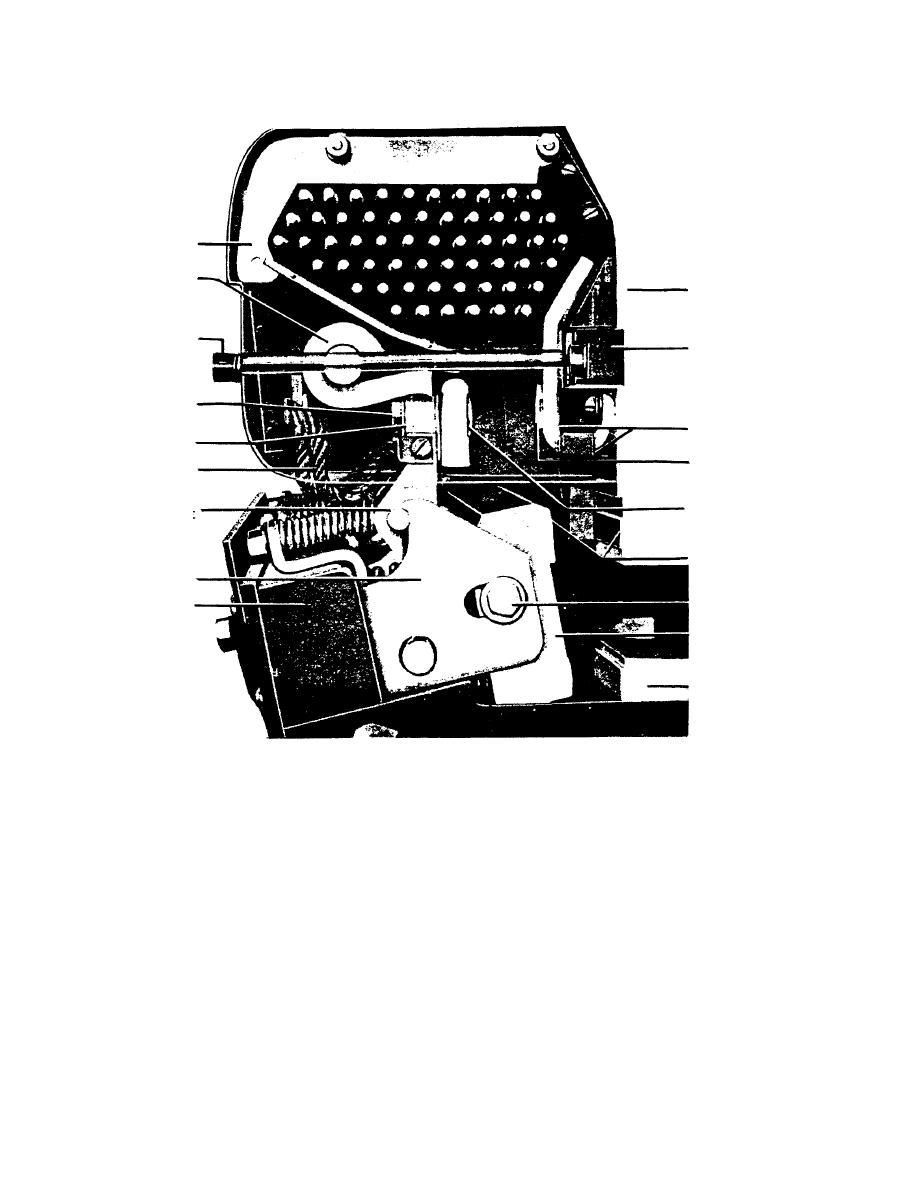

Custom Search
|
|

|
||
 TM 5-683/NAVFAC MO-1 16/AFJMAN 32-1083
ARC
QUENCHER
BLOWOUT
COIL
UPPER
ARC
CONTACT BAR
QUENCHER
SUPPORTING
SCREWS
MOLDED
SUPPORT
SCREWS FOR
FOR ARC
MOVABLE
QUENCNER
ARCING
CONTACT
INSULATION
LOCKING
PLATE
STATIONARY
FLEXIBLE
ARCING
CONNECTION
CONTACT
STOP PIN
MOVABLE
FOR MOVABLE
ARCING
ARCING
CONTACT
CONTACT
UPPER MAIN
CONTACT
SILVER
SUPPORT
CONTACTS
STOP SCREW
CROSS BAR
MAIN
CONTACT
BLOCK
LOWER
CONTACT
BAR
Figure 210. Typical contact construction for a network protector.
posed connections, and safety gear and tools must
connections that are dirty or corroded. Inspect the
be used to the best degree of safety such as face
case of each capacitor for leaks, bulges, or discolora-
shields, acid/caustic resistant gloves, emergency
tion. If any of these conditions exist, then replace
eyewash, etc. Electrolyte is the fluid contained in
the capacitor (para 112).
each battery cell (fig 211). Low electrolyte levels
c. Battery supplies. The control battery is such an
indicate too high a charging rate. In this case, the
important item in switchgear operation that it must
"float-voltage" setting of the charger should be
be given strict attention in the maintenance pro-
checked against the battery manufacturer's recom-
gram. The battery charger plays a critical role since
mendations. The specific gravity of the battery elec-
it supplies normal direct current (DC) power to the
trolyte should be taken using a hydrometer (para
station and maintains the batteries at a high level
14-6). If the readings between battery cells vary
of charge. The batteries, in addition to supplying
more than fifty points on the hydrometer scale, the
temporary heavy demands in excess of the charger
battery probably has a bad cell which should be
capacity, serve as a back-up source to trip breakers
upon loss of alternating current (AC) power. Failure
replaced. If all cells read consistently low (within 50
of the charger or its AC supply transfers all DC load
points), the battery should be fully charged and the
to the batteries. Each battery cell electrolyte level
battery charger checked for proper operation. The
should be checked. While a single cell may not pro-
battery top surface should be clean. Surface con-
duce a serious shock hazard, when the cells are
tamination can produce leakage currents that
connected in a battery bank, a severe shock hazard
present a drain on the charger and the battery. Vent
may be possible. Also, there are usually many ex-
holes in the cell caps should be open. Battery termi-
2-14
|
 |
|
 |
||